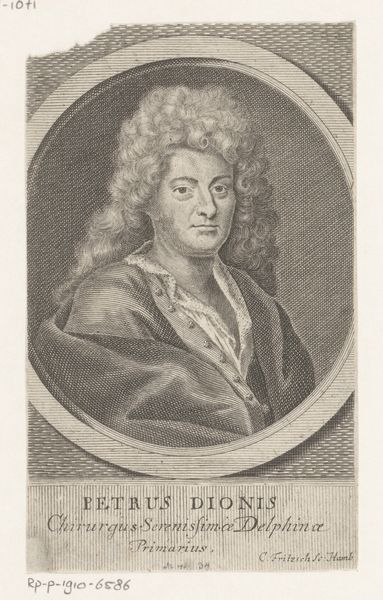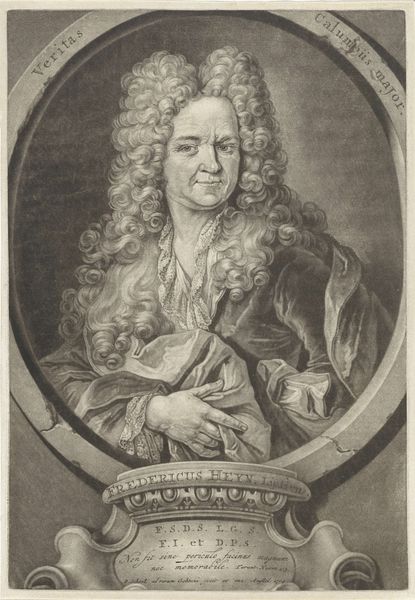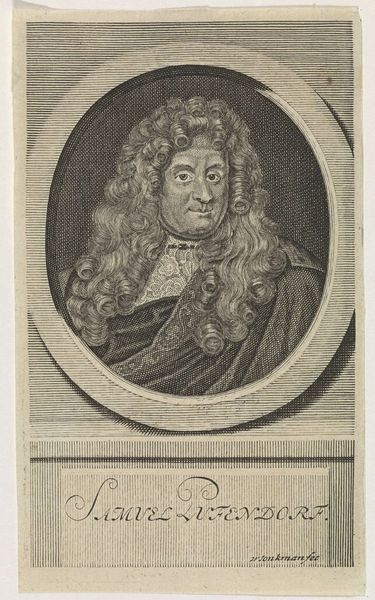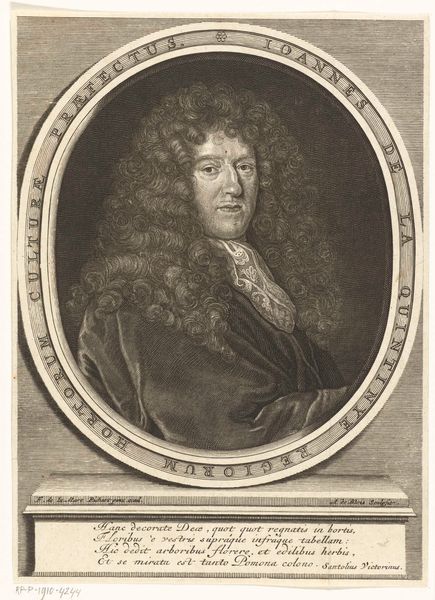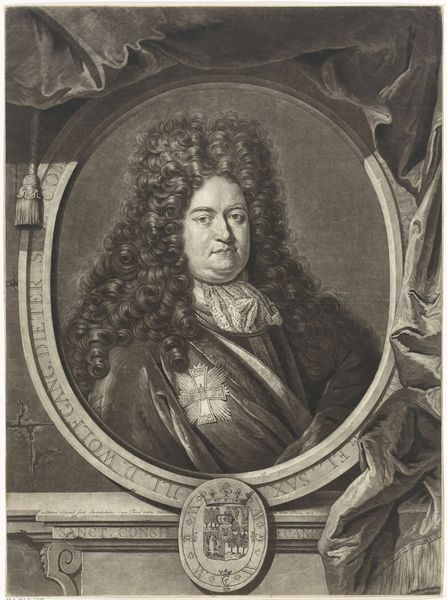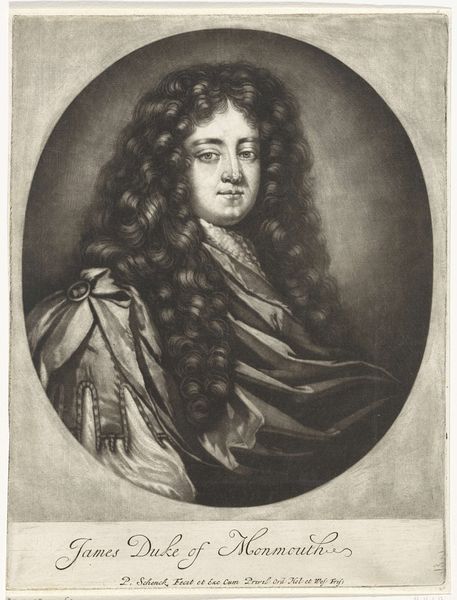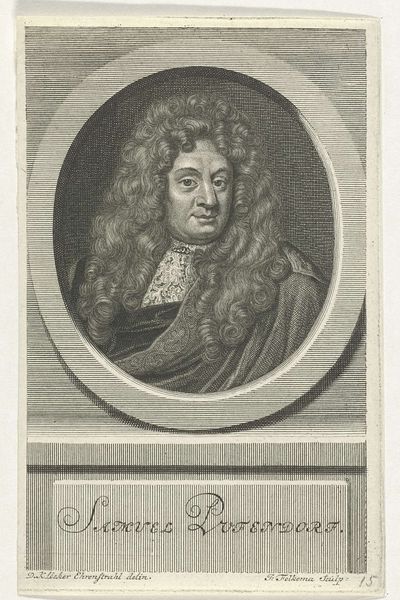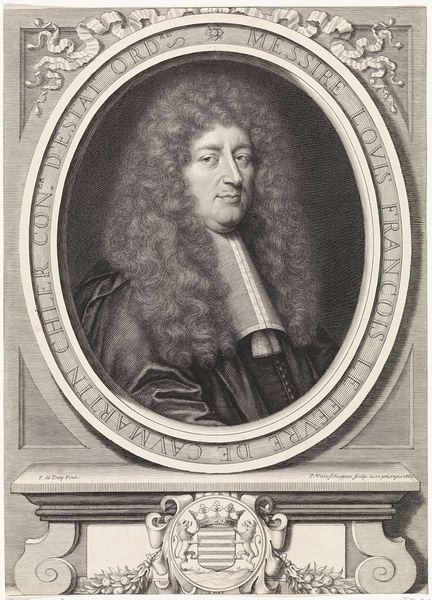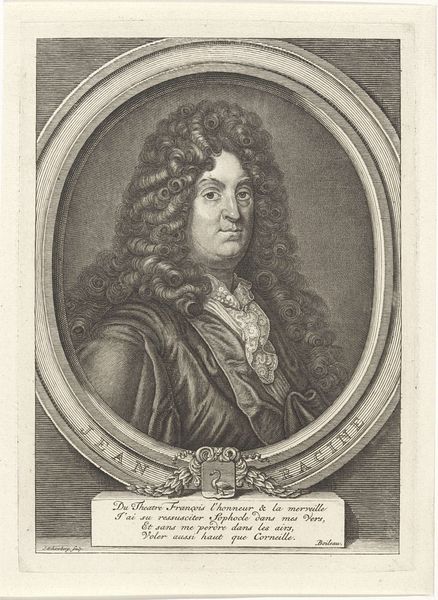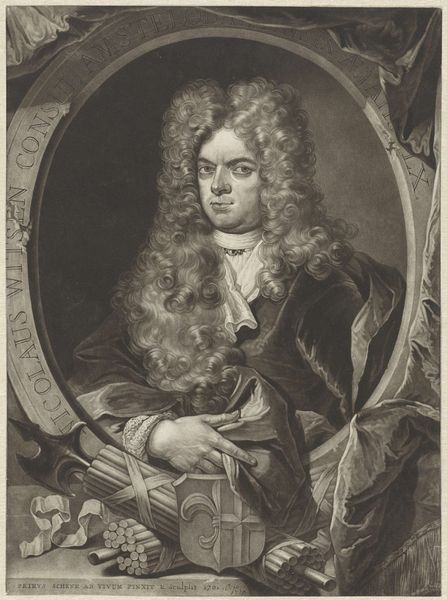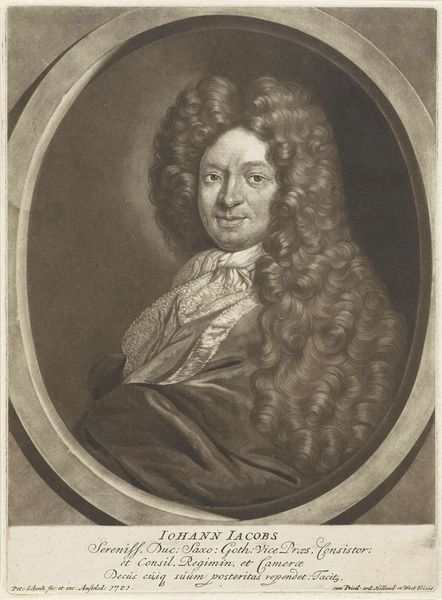
engraving
#
portrait
#
baroque
#
portrait image
#
history-painting
#
engraving
Dimensions: height 278 mm, width 176 mm
Copyright: Rijks Museum: Open Domain
This is Pieter Schenk’s portrait of Huldericus Eyben, made probably in the late 17th or early 18th century. It's an etching, a printmaking technique using acid to corrode lines into a metal plate, which is then inked and pressed onto paper. The real subject here isn't just Eyben himself, but the meticulous labor required to create such an image, and by extension, the labour required to maintain Eyben's status as a member of the elite. The crisp lines and tonal gradations weren’t achieved easily; they demanded careful work from Schenk and his workshop. The print is also a potent emblem of the era's social fabric, where image and status were meticulously crafted and carefully maintained. Consider how this relates to Eyben’s elaborate wig, lace cravat, and self-important Latin inscription. This print isn’t just a picture, it is a cultural artifact, reflecting the political economy of its time. By understanding its making, we come to see how it participates in a visual economy of power.
Comments
No comments
Be the first to comment and join the conversation on the ultimate creative platform.

